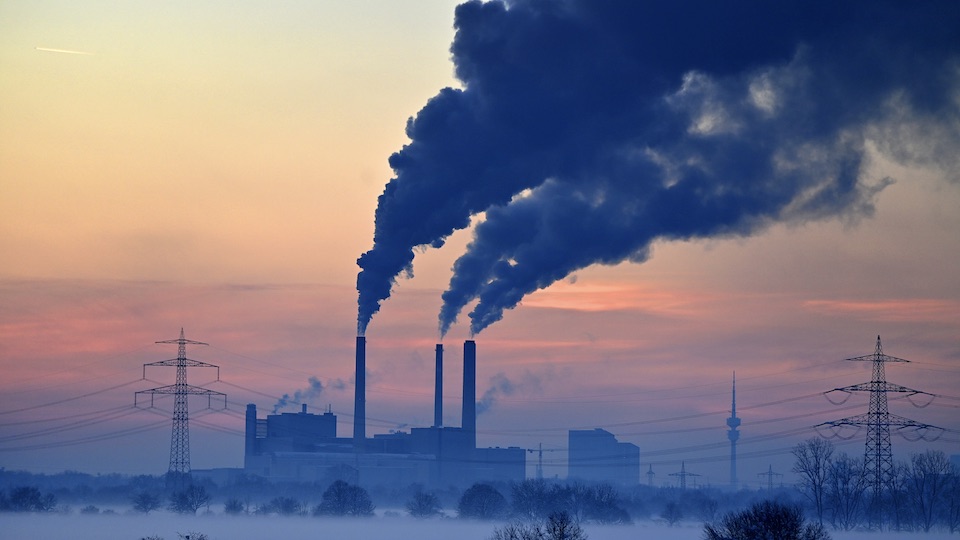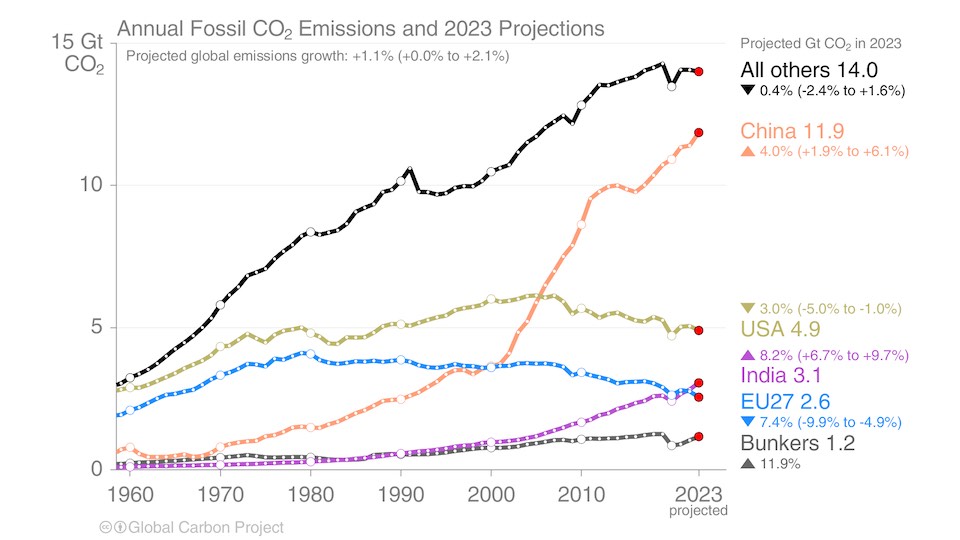CO2 emissions reach new all-time high

Global CO2 emissions are continuing to rise: In 2023 they will likely reach a new all-time high of 40.9 gigatons (billion tons). Fossil fuel sources produce the majority with 36.8 gigatons and the rest comes from land utilisation. This comes from the report presented on Tuesday for the Global Carbon Budget. Compared to the previous year, CO2 emissions are rising 1.1 percent, according to the report. In comparison to the pre-Corona year 2019, it is 1.4 percent higher.
More than 120 researchers participated in the report published on Tuesday in the professional journal, Earth System Science Data.
Pierre Friedlingstein from the University of Exeter, who led the study said: “The impacts of climate change are evident all around us, but action to reduce carbon emissions from fossil fuels remains painfully slow.”
According to the report, the percentage of the greenhouse gas CO2 in the atmosphere is 419.3 ppm (parts per million) on average, making it 51 percent higher than in 1750.
Regional differences
The regional trends with CO2 emissions vary “dramatically” according to the report: For example, the researchers anticipate an increase of over 8 percent in India. CO2 emissions will likely increase by 4 percent in China while they will decrease in the EU (-7.4 percent), the USA (-3 percent) and the rest of the world (-0.4 percent).

Forests, soil and oceans can only absorb about half of the human-made CO2 emissions. However, without global warming, they would be able to absorb considerably more. “These effects will continue to be amplified with increasing global warming,” emphasized Judith Hauck from the Alfred Wegener Institute in Bremerhaven.
Climate goals under threat
“It seems inevitable that we will exceed the goal of 1.5 degrees – and the last years have drastically shown us how serious the effects of global warming already are now,” said Julia Pongratz from the Ludwig Maximilians University in Munich, one of the main authors of the study.
In the Paris climate agreement of 2015, countries across the globe committed to limit global warming to as close to 1.5 degrees Celsius above pre-industrial levels. For this to happen, only a limited amount of climate-damaging greenhouse gases like CO2 can be in the Earth’s atmosphere.
The global budget for CO2 that can be emitted to reach this goal with a probability of 50 percent will already be used up in 7 years, as experts write in the report. Starting in 2024, there are still 15 years to keep global warming to 1.7 degrees and 28 years to 2 degrees.
Hottest decade
The report was released during the UN Climate Change Conference COP28 in Dubai. The World Meteorological Organization (WMO) also presented a new report, according to which an increase of greenhouse gases in the atmosphere “turbo-charged a dramatic acceleration in ice melt and sea level rise.” According to the report, the years from 2011 to 2020 were the warmest decade since records began.
During this time, the global average temperature was 1.1 degrees above the values in the late 19th century. This phase when industrialisation began holds as a reference era for the goal for not letting the average temperate rise above more than 1.5 degrees.
WMO Secretary-General Petteri Taalas said: “Each decade since the 1990s has been warmer than the previous one and we see no immediate sign of this trend reversing.” This can clearly be led back to greenhouse gas emissions caused by humans – therefore, reducing these emissions should be of the highest priority. (dpa / js)